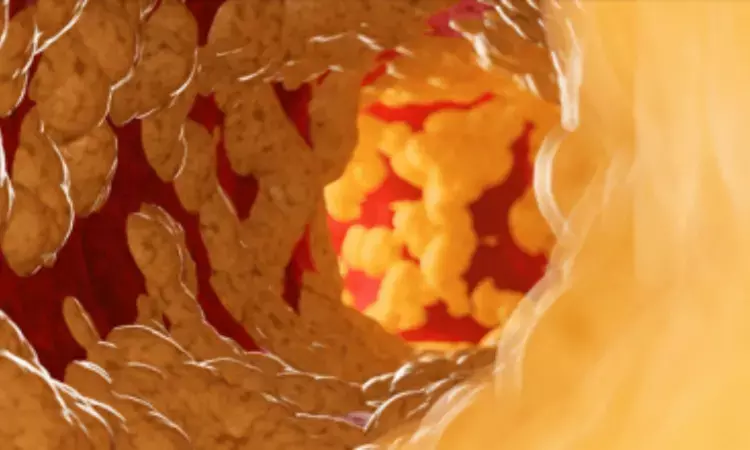- Home
- Medical news & Guidelines
- Anesthesiology
- Cardiology and CTVS
- Critical Care
- Dentistry
- Dermatology
- Diabetes and Endocrinology
- ENT
- Gastroenterology
- Medicine
- Nephrology
- Neurology
- Obstretics-Gynaecology
- Oncology
- Ophthalmology
- Orthopaedics
- Pediatrics-Neonatology
- Psychiatry
- Pulmonology
- Radiology
- Surgery
- Urology
- Laboratory Medicine
- Diet
- Nursing
- Paramedical
- Physiotherapy
- Health news
- Fact Check
- Bone Health Fact Check
- Brain Health Fact Check
- Cancer Related Fact Check
- Child Care Fact Check
- Dental and oral health fact check
- Diabetes and metabolic health fact check
- Diet and Nutrition Fact Check
- Eye and ENT Care Fact Check
- Fitness fact check
- Gut health fact check
- Heart health fact check
- Kidney health fact check
- Medical education fact check
- Men's health fact check
- Respiratory fact check
- Skin and hair care fact check
- Vaccine and Immunization fact check
- Women's health fact check
- AYUSH
- State News
- Andaman and Nicobar Islands
- Andhra Pradesh
- Arunachal Pradesh
- Assam
- Bihar
- Chandigarh
- Chattisgarh
- Dadra and Nagar Haveli
- Daman and Diu
- Delhi
- Goa
- Gujarat
- Haryana
- Himachal Pradesh
- Jammu & Kashmir
- Jharkhand
- Karnataka
- Kerala
- Ladakh
- Lakshadweep
- Madhya Pradesh
- Maharashtra
- Manipur
- Meghalaya
- Mizoram
- Nagaland
- Odisha
- Puducherry
- Punjab
- Rajasthan
- Sikkim
- Tamil Nadu
- Telangana
- Tripura
- Uttar Pradesh
- Uttrakhand
- West Bengal
- Medical Education
- Industry
Researchers successfully perform ostial right coronary artery CTO recanalization using rotational atherectomy in subintimal space

USA: There has always been a controversy about performing atherectomy in the subintimal space. In a recent case study published in Cardiovascular Revascularization Medicine, the researchers described successful ostial right coronary artery CTO (chronic total occlusion) recanalization using rotational atherectomy in subintimal space.
Severely calcified ostial CTO percutaneous coronary intervention (PCI) is challenging with a high prevalence of balloon uncrossable lesions. Despite the higher aortic dissection and perforation risk, rotational atherectomy (RA) may be used as a bailout strategy for uncrossable lesions. The authors note that the objective is to modify the subintimal space with dissection and re-entry (DR) techniques in the ostial/proximal coronary segment to advance the devices and cross the proximal CTO cap.
Marcelo Harada Ribeiro, SOS Cardio Hospital, Florianopolis, SC, Brazil, and colleagues describe the successful use of subintimal RA in a balloon-uncrossable ostial right coronary artery (RCA) CTO in a 78-year-old man.
The man had a history of CABG (coronary artery bypass surgery) 10 years ago and presented with medically refractory angina. After a failed previous attempt, he was referred for RCA CTO PCI. Coronary angiography showed a severely calcified ostial RCA occlusion filling by septal collaterals from the left anterior descending artery (LAD). There were patent saphenous vein grafts (SVGs) to the left anterior descending (LAD) and the ramus.
According to expert recommendations, RA should not be performed in dissection planes due to perforation risk.
"Our case describes the successful use of rotational atherectomy in the extra plaque space of an ostial RCA CTO lesion," the authors wrote. In CTO PCI, experience with RA in the extra plaque space is limited, once RA carries a higher risk for complications, particularly in CTO PCI."
The authors recommend using high-speed (180,000 rpm) with very short runs and mainly in straight segments in balloon-uncrossable ostial CTOs when RA is needed as a bailout strategy for subintimal calcium modification.
Reference:
Ribeiro, M. H., Dallan, L. A. P., Quesada, F. H., Rodriguez, F. H., Silveira, C., Megaly, M. S., Brilakis, E., & Azzalini, L. (2023). Extra-plaque rotational atherectomy for treating a balloon uncrossable ostial right coronary artery chronic total occlusion. Cardiovascular Revascularization Medicine. https://doi.org/10.1016/j.carrev.2023.06.002
Dr Kamal Kant Kohli-MBBS, DTCD- a chest specialist with more than 30 years of practice and a flair for writing clinical articles, Dr Kamal Kant Kohli joined Medical Dialogues as a Chief Editor of Medical News. Besides writing articles, as an editor, he proofreads and verifies all the medical content published on Medical Dialogues including those coming from journals, studies,medical conferences,guidelines etc. Email: drkohli@medicaldialogues.in. Contact no. 011-43720751


